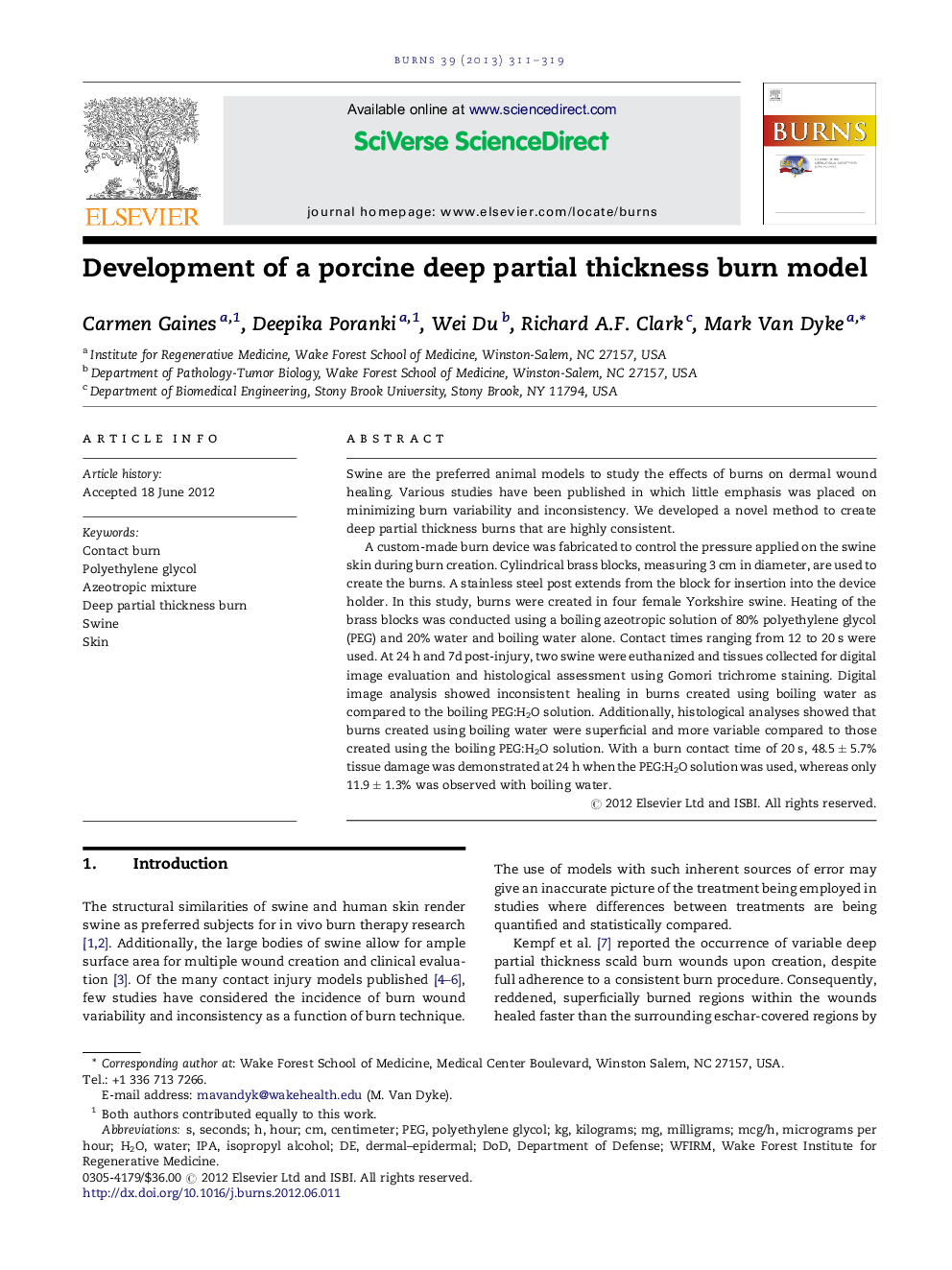| Article ID | Journal | Published Year | Pages | File Type |
|---|---|---|---|---|
| 3105100 | Burns | 2013 | 9 Pages |
Swine are the preferred animal models to study the effects of burns on dermal wound healing. Various studies have been published in which little emphasis was placed on minimizing burn variability and inconsistency. We developed a novel method to create deep partial thickness burns that are highly consistent.A custom-made burn device was fabricated to control the pressure applied on the swine skin during burn creation. Cylindrical brass blocks, measuring 3 cm in diameter, are used to create the burns. A stainless steel post extends from the block for insertion into the device holder. In this study, burns were created in four female Yorkshire swine. Heating of the brass blocks was conducted using a boiling azeotropic solution of 80% polyethylene glycol (PEG) and 20% water and boiling water alone. Contact times ranging from 12 to 20 s were used. At 24 h and 7d post-injury, two swine were euthanized and tissues collected for digital image evaluation and histological assessment using Gomori trichrome staining. Digital image analysis showed inconsistent healing in burns created using boiling water as compared to the boiling PEG:H2O solution. Additionally, histological analyses showed that burns created using boiling water were superficial and more variable compared to those created using the boiling PEG:H2O solution. With a burn contact time of 20 s, 48.5 ± 5.7% tissue damage was demonstrated at 24 h when the PEG:H2O solution was used, whereas only 11.9 ± 1.3% was observed with boiling water.
